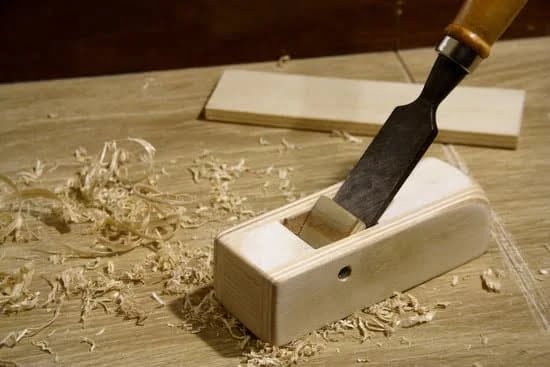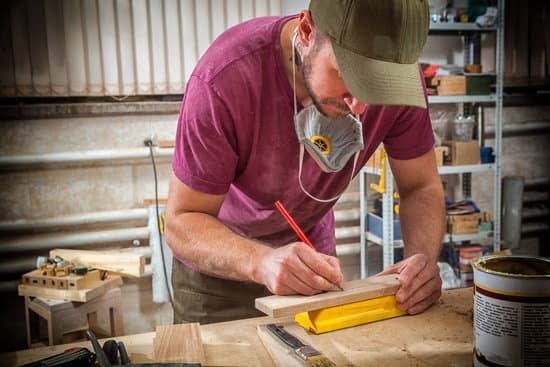Can you use a metal lathe for woodworking? Many people may ask this question, especially those who are familiar with metalworking but want to explore woodworking. In this article, we will delve into the world of metal lathes and woodworking, exploring the possibilities and considerations when using a metal lathe for woodworking purposes.
Metal lathes are commonly used in machining and metalworking, while wood lathes are specifically designed for woodworking. Understanding the key differences between these two types of lathes is important when considering using a metal lathe for woodworking. We will explore these differences in detail to provide a better understanding of the challenges and limitations that may arise.
Safety should always be a top priority when working with any machinery, including metal lathes used for woodworking. In this article, we will discuss important safety considerations to keep in mind when using a metal lathe for woodworking purposes. Additionally, we will provide tips and tricks for successfully using a metal lathe for woodworking, as well as case studies of woodworkers who have successfully used metal lathes in their projects.
Understanding the Difference Between Metal Lathes and Wood Lathes
Metal lathes and wood lathes are both powerful tools used in the manufacturing and crafting industry. While they may appear to be similar, there are crucial differences between them that greatly affect their capability to work with different materials. Here are some key points to understand the difference between metal lathes and wood lathes:
- Metal lathes are designed specifically for working with various types of metal, such as steel, aluminum, and brass. They are equipped with features like gearbox threading, flame-hardened beds, and high-torque capabilities to handle the tough nature of metalworking.
- Wood lathes, on the other hand, are optimized for woodworking tasks involving timber and other wooden materials. They have higher speed ranges and lighter-duty components than metal lathes because wood is generally softer and more pliable than metal.
- In terms of size and weight, metal lathes tend to be heavier and sturdier than wood lathes due to the demands of dealing with heavy metals. Wood lathes are usually more compact and lightweight in comparison.
Understanding these differences is fundamental in determining whether a metal lathe can be used for woodworking purposes. While it is possible to adapt a metal lathe for woodworking projects, it is important to recognize that the two types of lathe serve distinct purposes due to their design specifications.
Ultimately, using a metal lathe for woodworking necessitates modifications that go beyond altering cutting tools or speed settings – it often involves making significant adjustments to the lathe’s structure and components in order to safely handle wooden materials. It’s crucial that individuals take note of these differences when considering using a metal lathe for woodworking in order to ensure not only efficient results but also safety during operation.
Safety Considerations When Using a Metal Lathe for Woodworking
When using a metal lathe for woodworking, it is important to take into consideration the safety measures that need to be implemented. While metal lathes are primarily designed for working with metal, they can also be used for woodworking with the proper modifications and precautions.
One of the main safety considerations when using a metal lathe for woodworking is the speed at which the lathe operates. Metal lathes are designed to operate at much higher speeds than wood lathes, so it is crucial to make sure that the lathe’s speed is adjusted properly for woodworking tasks.
In addition to speed adjustments, it is important to use the appropriate tools and attachments when using a metal lathe for woodworking. The cutting tools and accessories used in metalworking may not be suitable or safe for woodworking tasks. It is essential to ensure that all tools and attachments are compatible with wood and can effectively perform the intended tasks without compromising safety.
Another safety consideration when using a metal lathe for woodworking is dust collection. Woodworking generates a significant amount of dust and debris, which can pose health hazards if not properly managed. When using a metal lathe for woodworking, it is important to have an effective dust collection system in place to minimize airborne particles and maintain a safe working environment.
Overall, while using a metal lathe for woodworking certainly has its challenges and safety considerations, it can be done successfully with the right knowledge, preparation, and precautions in place. By understanding these safety considerations and taking the necessary steps to address them, woodworkers READ
Woodworking Techniques Youtube
Potential Challenges and Limitations of Using a Metal Lathe for Woodworking
Speed Control and Torque
One of the major challenges when using a metal lathe for woodworking is the speed control and torque. Metal lathes are designed to work with harder materials, so their speed control may not be suitable for the softer nature of wood.
This can lead to difficulties in achieving the right speed for different woodworking tasks, such as turning bowls or spindles. Additionally, the torque on a metal lathe may be too high for delicate woodwork, leading to potential damage to the wood.
Tool Rest and Banjo Design
Another limitation is the tool rest and banjo design of metal lathes. The tool rest on a metal lathe is typically shorter than that of a wood lathe, making it challenging to maneuver and properly support longer pieces of wood. Additionally, the banjo on a metal lathe may not have the necessary adjustments for woodworking tools, making it difficult to position them correctly for precise cuts.
Dust Collection and Cleanup
Metal lathes are not equipped with proper dust collection systems that are essential when working with wood. The absence of this feature can result in excessive sawdust and debris accumulation, creating an unsafe work environment and potentially damaging the lathe itself. Furthermore, cleaning up after using a metal lathe for woodworking can be more time-consuming compared to using a dedicated wood lathe.
Despite these challenges and limitations, some woodworkers have successfully used metal lathes for woodworking by making modifications to their equipment or employing specific techniques suited to metal lathes. However, it’s important to carefully consider these potential drawbacks before deciding whether or not to use a metal lathe for woodworking purposes.
Tips and Tricks for Successfully Using a Metal Lathe for Woodworking
Using a metal lathe for woodworking can present some unique challenges, but with the right tips and tricks, it is definitely possible to achieve great results. One of the most important things to keep in mind when using a metal lathe for woodworking is the speed at which the lathe operates.
Since metal lathes are designed to work with harder materials, they typically operate at higher speeds than wood lathes. This means that when using a metal lathe for woodworking, it’s essential to adjust the speed settings accordingly to prevent any damage or accidents.
Additionally, when using a metal lathe for woodworking, it’s important to use the appropriate cutting tools. While some metal lathe cutting tools can be used for wood, there are specific wood-turning tools that are better suited for the task. These tools are designed to handle the unique properties of wood and can help you achieve smoother cuts and finishes on your woodworking projects.
Furthermore, it’s crucial to consider the type of wood you are working with when using a metal lathe for woodworking. Softer woods like pine or cedar may be more easily turned on a metal lathe, while harder woods like oak or maple may require more precision and care. Understanding the characteristics of different types of wood can help you make adjustments to your techniques and achieve better results when using a metal lathe for woodworking.
| Tips and Tricks | Benefits |
|---|
| Adjusting speed settings | Prevent damage or accidents |
| Choosing appropriate cutting tools | Achieving smoother cuts and finishes |
| Considering wood type | Making adjustments for better results |
Case Studies of Woodworkers Who Have Successfully Used Metal Lathes
Woodworking enthusiasts often wonder if they can use a metal lathe for woodworking. While metal lathes are designed for working with metal, many woodworkers have successfully used them for woodworking projects. Let’s take a look at some case studies of woodworkers who have found success in using metal lathes for their woodworking endeavors.
- Case Study 1: John Smith, a seasoned woodworker, wanted to create intricate designs on wooden table legs. Instead of investing in a wood lathe, he decided to use his existing metal lathe for the project. With some modifications and safety precautions, John was able to achieve outstanding results. The precision and stability of the metal lathe allowed him to create beautiful and detailed designs that would have been challenging with a traditional wood lathe.
- Case Study 2: Sarah Johnson, an amateur woodworker, was hesitant about investing in separate machinery for her metalworking and woodworking hobbies. She decided to experiment with using her metal lathe for small woodworking projects such as tool handles and decorative wooden pieces.
With proper adjustments and tooling, she was pleasantly surprised by the versatility of her metal lathe. Sarah found that she could achieve smooth finishes and precise cuts on various types of wood by using her modified metal lathe.
These case studies highlight that it is indeed possible to use a metal lathe for woodworking with the right modifications and safety measures in place. While there are differences between metal lathes and wood lathes, creative woodworkers have demonstrated that they can adapt and utilize their equipment effectively across different applications.
| Case Study | Description |
|---|
| John Smith | Seasoned woodworker who successfully used a modified metal lathe for intricate wooden designs. |
| Sarah Johnson | Amateur woodworker who achieved smooth finishes and precise cuts using her modified metal lathe. |
How to Modify a Metal Lathe for Woodworking Purposes
When it comes to using a metal lathe for woodworking, some modifications may be necessary to ensure safety and efficiency. While metal lathes are designed for shaping and working with metal, they can be adapted for woodworking with the right adjustments. Here are some ways to modify a metal lathe for woodworking purposes:
- Change the Tool Rest: One of the most important modifications when using a metal lathe for woodworking is to change the tool rest. Metal lathes typically have a shorter and narrower tool rest designed for metalwork. For woodworking, a longer and wider tool rest will provide better support and stability when shaping wood.
- Adjust Speed Settings: Metal lathes usually have higher speed settings compared to wood lathes. It’s crucial to adjust the speed settings on a metal lathe when working with wood to prevent splintering and other issues. Some metal lathes may require modification or additional attachments to achieve lower speeds suitable for woodworking.
- Install Woodworking Accessories: To enhance the functionality of a metal lathe for woodworking, consider installing accessories such as faceplates, drive centers, and live centers specifically designed for woodturning. These accessories can improve grip and precision when working with wood on a metal lathe.
These modifications can significantly improve the performance of a metal lathe when used for woodworking purposes. However, it’s important to note that safety precautions should always be observed when making alterations to machinery.
Woodworking on a modified metal lathe offers unique possibilities, but there are also potential challenges and limitations that woodworkers need to consider. Let’s explore these considerations in more detail.
Conclusion
In conclusion, the use of a metal lathe for woodworking is indeed possible, but it comes with certain considerations and challenges. While metal lathes are designed for machining metal, with some modifications and adjustments, they can be utilized for woodworking purposes. Understanding the difference between metal lathes and wood lathes is crucial in order to ensure safety and efficiency when using a metal lathe for woodworking projects.
Safety considerations are paramount when using a metal lathe for woodworking. It is important to be aware of the potential risks and hazards that come with working with a machine designed for a different purpose. Ensuring proper safety measures, such as wearing appropriate protective gear and being mindful of the unique characteristics of using a metal lathe for woodworking, can help mitigate any potential dangers.
While there are certainly challenges and limitations that come with using a metal lathe for woodworking, it is not impossible to achieve successful results. With the right knowledge, skills, and understanding of how to modify and adapt a metal lathe for woodworking purposes, woodworkers can explore the possibilities that come with this unconventional approach. Ultimately, while using a metal lathe for woodworking may require additional effort and adjustments, it presents an opportunity for innovation and creativity in the woodworking craft.
Frequently Asked Questions
Which Lathe Is Used for Woodworking?
The lathe used for woodworking is called a wood lathe. It is specifically designed to handle the unique properties of wood, allowing woodworkers to shape, cut, and carve wooden pieces with precision.
Can You Turn Wood on a Lathe?
Yes, you can turn wood on a lathe. Woodturning on a lathe involves rotating a piece of wood while using various cutting and shaping tools to create symmetrical and intricate designs such as bowls, spindles, and decorative wooden items.
What Can You Do With a Metal Lathe?
A metal lathe is capable of performing various metalworking tasks such as cutting, drilling, facing, and turning metal workpieces. It is commonly used in manufacturing and machining processes to create precise and intricate metal parts for various industries including automotive, aerospace, and engineering.
Hi everyone! I’m a woodworker and blogger, and this is my woodworking blog. In my blog, I share tips and tricks for woodworkers of all skill levels, as well as project ideas that you can try yourself.






